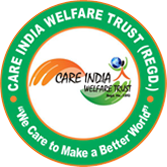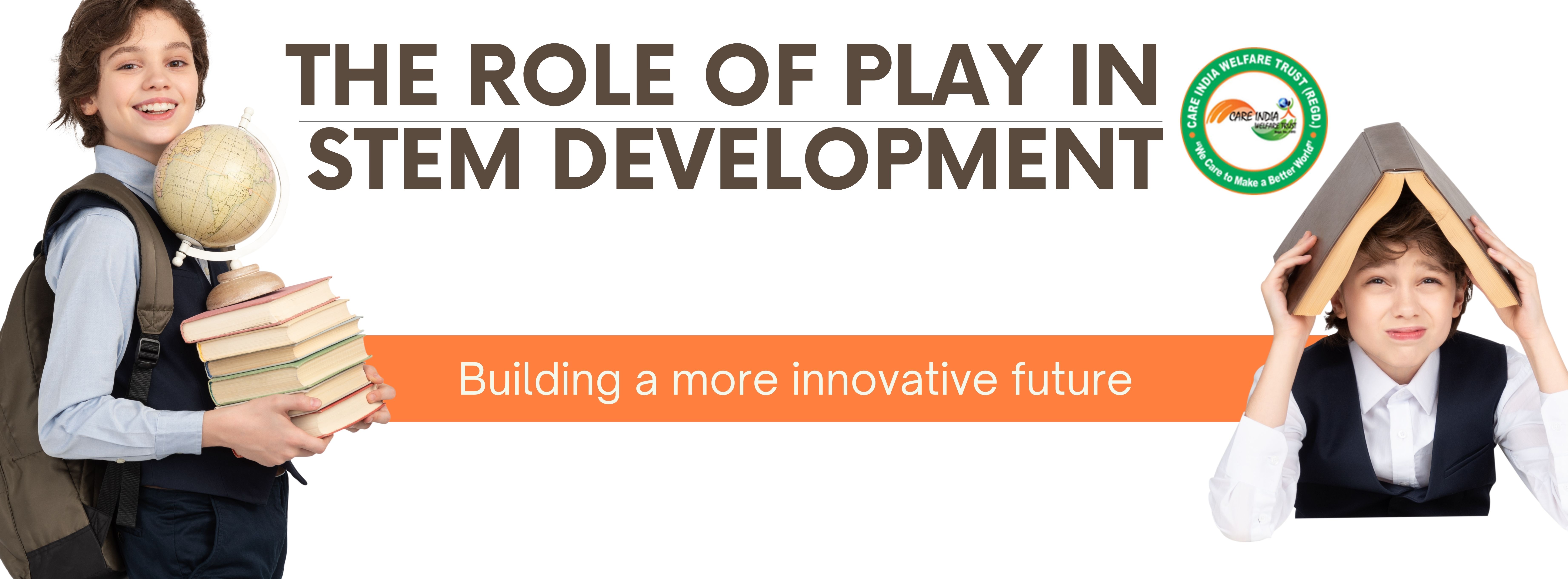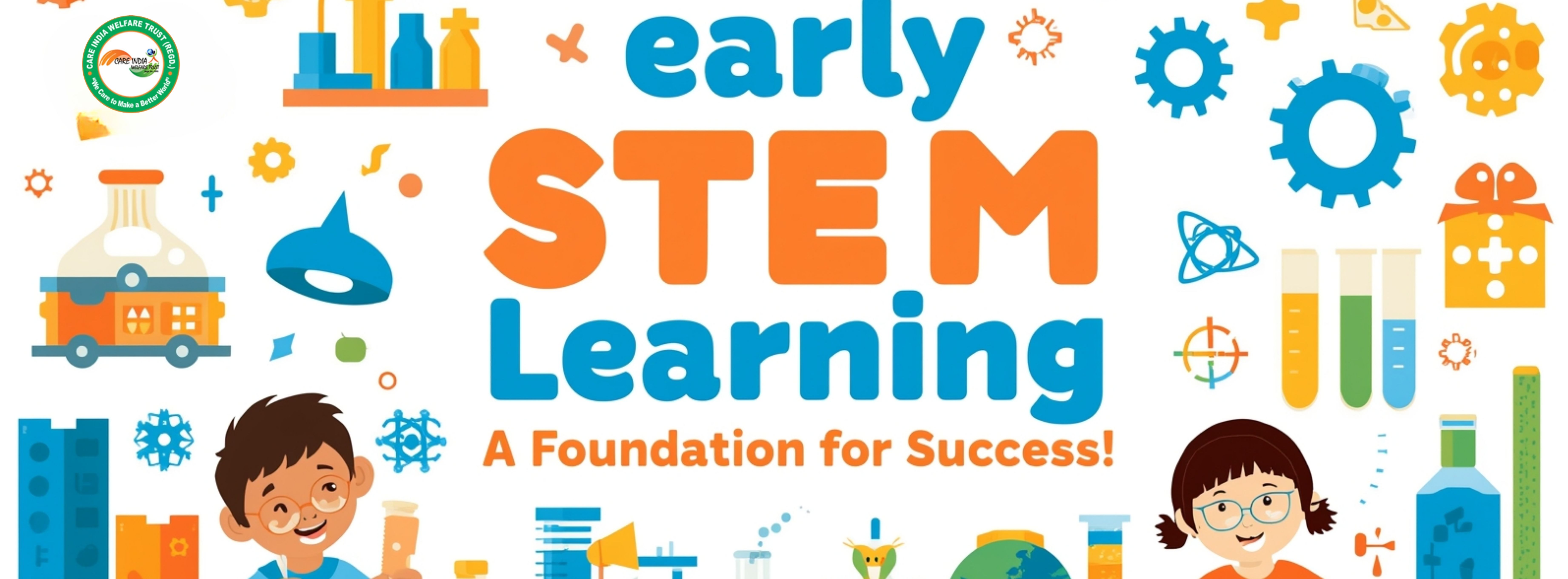STEM (Science, Technology, Engineering, and Mathematics) education is often thought of as something for older students, but in recent years, educators and researchers have discovered the importance of introducing STEM concepts to children at an early age. Early exposure to STEM can lay the foundation for future success in school and life. But at what age should STEM learning begin? Let’s explore this topic in detail and examine how we can effectively support STEM development in young children.
Early Childhood and STEM: Laying the Foundation
When we think about STEM, we might picture high school students building robots or solving complex math problems. However, the foundations of STEM learning begin much earlier than that. Research shows that babies and toddlers are born with an incredible ability to absorb information. This is the perfect time to cultivate curiosity and a love of learning in subjects like science and mathematics.
In early childhood, children learn best through their senses, movement, and exploration. Engaging them with simple activities like sorting objects, playing with blocks, or observing the world around them can set the stage for future STEM learning. These activities help children understand basic concepts like cause and effect, patterns, and spatial relationships—all of which are critical in STEM fields.
The Role of Play in STEM Development
Play is not just a way for children to pass the time; it is an essential part of their development. Through play, children begin to understand their world and build skills that will serve them throughout their lives. In the context of STEM, play is particularly important because it allows children to explore ideas and concepts in a hands-on way.
For example, when a child plays with building blocks or puzzles, they are developing their understanding of engineering and spatial reasoning. Similarly, activities like playing with water, sand, or even making simple recipes can introduce early concepts of science and math, like volume, measurement, and cause and effect. Play also encourages problem-solving, critical thinking, and creativity—skills that are vital for success in any STEM field.
Key Milestones in STEM Learning for Young Children
STEM learning does not have to start with complicated subjects. Instead, it can build over time as children grow. Some key milestones in early STEM learning include:
- Infants (0–2 years): Infants begin learning about their world through sensory exploration. Simple activities like grasping, reaching, and looking at objects are crucial for developing spatial awareness.
- Toddlers (2–3 years): Toddlers start experimenting with basic cause and effect. They can enjoy activities like stacking blocks, pouring water, or matching shapes. These activities introduce foundational math and science concepts.
- Preschoolers (3–5 years): Preschool-aged children begin to engage in more complex activities that require problem-solving and logic. Simple experiments (e.g., mixing colors or growing plants) can introduce scientific thinking, while sorting objects by size, color, or shape introduces math concepts.
- Elementary-age (5+ years): By this age, children are ready to start exploring more formal STEM concepts, such as basic coding, understanding simple machines, or investigating natural phenomena.
The Importance of Exposure to STEM Concepts in Preschool
Preschool is an especially important time for introducing STEM concepts. Young children are incredibly curious, and this is the age when their brains are highly receptive to new information. If STEM concepts are introduced in preschool, children can develop a sense of wonder and excitement about the world around them.
Teachers can introduce basic STEM ideas playfully and engagingly through storytelling, games, hands-on activities, and experiments. For example, children might explore the weather by observing clouds, talking about the changing seasons, or learning about animals and their habitats. These simple experiences help build the foundation for deeper scientific understanding later on.
How STEM Learning Supports Cognitive and Social Growth
STEM learning does more than just teach facts and concepts. It supports overall cognitive development and helps children develop important social and emotional skills.
Cognitively, STEM activities challenge children to think critically and solve problems. For example, when building something with blocks, children must figure out how to balance and support their structures, which helps them develop logical thinking and spatial awareness.
Socially, STEM learning often involves working with others to solve problems. Whether in a group project or a shared activity, children learn to communicate, cooperate, and collaborate. These social skills are essential for success in school and beyond.
Incorporating STEM into Everyday Activities
One of the best ways to foster STEM learning is by incorporating STEM concepts into everyday life. STEM does not have to be confined to the classroom or specific activities. It’s all around us, and everyday tasks can be rich learning opportunities.
For example, cooking with children can be a great way to teach math (measuring ingredients), science (chemical reactions), and motor skills (stirring, chopping). A walk in the park can be a lesson in biology (observing plants and animals) or physics (how objects move or how gravity works). Even simple household chores, like organizing the pantry, can teach sorting and categorizing—important skills for math.
The Impact of Parental Involvement in Early STEM Education
Parental involvement plays a crucial role in early STEM learning. Research shows that when parents are engaged in their children’s education, children are more likely to excel in school. This is particularly true for STEM learning.
Parents can encourage STEM at home by providing opportunities for exploration and discovery. Simple activities like reading books about nature, visiting a science museum, or even doing a DIY project together can foster a love for STEM. Parents should also model curiosity and problem-solving by asking questions, experimenting, and showing enthusiasm for learning.
STEM Learning in Primary School: Building on Early Foundations
While early childhood is crucial, STEM learning should continue into primary school. In fact, primary school is the time to build on the foundation laid in the early years and start diving into more structured STEM education.
By this age, children are ready for more hands-on learning in subjects like math, science, and technology. They can start exploring more advanced topics, like basic programming, simple engineering projects, or understanding the basics of the environment. The skills developed in early childhood—critical thinking, problem-solving, and curiosity—will help them succeed in these more complex subjects.
Technology and Tools to Support Early STEM Education
Technology can be an effective tool to support early STEM learning. While screen time should be limited for young children, many educational apps, websites, and games can foster STEM skills in a fun and engaging way.
For example, coding games for young children can introduce them to the basics of programming, while virtual science experiments can give them a taste of scientific inquiry. Similarly, interactive websites or apps that teach math through games can help develop early number sense and problem-solving skills.
Benefits of Early STEM Learning for Future Academic Success
Early exposure to STEM education has many long-term benefits. Children who engage with STEM topics early on develop stronger problem-solving skills, better critical thinking abilities, and a greater interest in learning. These skills will serve them well throughout their academic careers, leading to better performance in school and greater opportunities in the future.
Studies have also shown that students who are exposed to STEM concepts early are more likely to pursue STEM careers later in life. By fostering a love for science, technology, engineering, and math early on, we are helping to create the next generation of innovators, scientists, and problem-solvers.
Debunking Myths: Is There Such a Thing as Too Early for STEM?
Some parents and educators may wonder if STEM learning should start at such a young age. They may fear that it will be too complicated for young children or that it might take away from other areas of learning. However, the truth is that introducing STEM at an early age is not about pushing children to master complex topics; it’s about sparking curiosity and building foundational skills that will help them later.
There is no “too early” for STEM learning. In fact, the earlier we start, the better. STEM learning for young children should be fun, engaging, and age-appropriate. It’s all about fostering curiosity, creativity, and critical thinking—skills that will last a lifetime.
Cultural Differences in Early STEM Exposure
It’s important to recognize that different cultures may have different attitudes toward early STEM education. In some cultures, STEM might be seen as something to focus on only when children are older, while in others, it may be integrated into everyday life from a young age.
Understanding these cultural differences can help educators and parents tailor their approaches to supporting STEM learning. For example, in some countries, science museums and interactive learning spaces for young children are common, while in others, parents may rely more on books and guided activities at home.
How to Integrate STEM into Early Childhood Curriculum
Integrating STEM into early childhood curriculum doesn’t have to be complicated. Educators can introduce STEM concepts in a fun and engaging way by including hands-on activities, problem-solving tasks, and exploration-based learning. It’s important to make STEM learning feel like a natural part of the day rather than an extra subject that children must “study.”
Incorporating art, music, and storytelling into STEM lessons can also make learning more engaging. For example, a lesson about the seasons might involve reading a book about animals in winter, followed by an activity where children create paper snowflakes or observe changes in the weather.
Challenges and Solutions for Early STEM Education
While there are many benefits to early STEM learning, there are also challenges. One of the biggest challenges is access to resources. Not all schools or homes have the necessary tools and materials to support STEM learning. Additionally, there may be a lack of trained educators or parents who feel comfortable teaching STEM concepts to young children.



